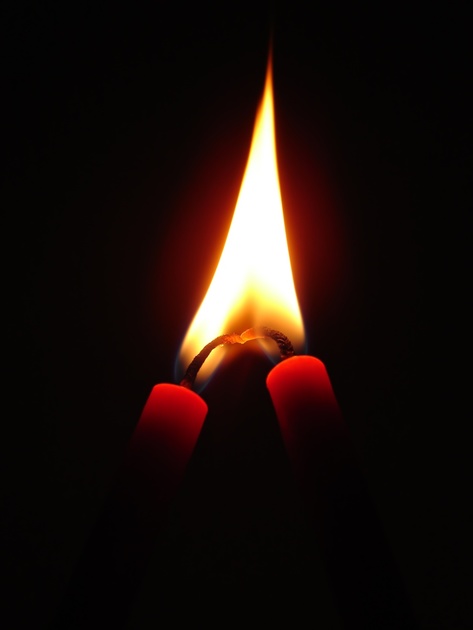
One of the taboos in Judaism is the prohibition against graven images. There are numerous prohibitions against various forms of images, and we are even forbidden to make certain images of the human form even not for worship purposes. And, yet, we find two images in the Holy of Holies, a place so sacred that the High Priest is only allowed to enter once a year! The Cherubim had wings like angels (Shemos 25:18) and faces of a child (Succah 5a). What are we to make of this?
The Talmud (Yoma 54a) tells of a vivid ritual that was performed during the festivals, in the times when the first Temple was extant:
Rav Ketina said: When the Jewish people would ascend for one of the pilgrimage Festivals, the priests would roll up the curtain for them and show them the cherubs, which were clinging to one another, and say to them: See how you are beloved before G-d, like the love of a male and female. The two cherubs symbolize the Holy One, Blessed be He, within an embrace.
While it is difficult to know for sure, the implication is not just of a man and a woman in an embrace, but a man and a woman in a sexual embrace, or certainly a passionate embrace with no clothes. The Talmud (Yoma 54b) records an incident when the second Temple was destroyed, gentiles entered the Holy of Holies and saw images of the Cherubim painted on the wall (the second Temple did not have the ark) and scoffed in disgust, which indicates that they saw an unseemly graphic image. Rashi (Op. Cit.) describes the Cherubim as “attached man to wife, hugging in arms.”
The Maharal (Netivot Olam, Netiv Avodah 6:4) notes that the Cherubim were male and female because it represents the strongest form of love and connection. Rabbenu Bechaye (Exodus 25:18) makes the obvious point that the Cherubs could have been a father and child, and also symbolically represent love. However, the form was male and female to imply the most intimate closeness possible, and that Jews and G-d connect passionately without any intermediaries.
We find Rashi (Numbers 7:1) quoting Tanhuma (Nasso 20) which interpreted the Jewish people and G-d entering into a marriage canopy (Chuppah), based on a play on words. The verse states: “And it came to pass on the day Moses completed the Tabernacle.” In Hebrew, the word “completed” is “Kalot”, which phonetically has the same letters as “Kallah”, as if to say that the day of the inauguration of the Tabernacle, was a kind of Hieros Gamos enacted between the Jewish people and G-d, within the Tabernacle.
Additionally, Zohar (I:236a) notes that the scripture describes Moses as “A man of G-d”, literally “Ish Elokim”, a husband of G-d. That is, Moses’ relationship with G-d was so intimate, just as a man can annul or affirm his wife’s vows, so too Moses had the ability to annul or affirm G-d’s actions in this world.
It is impressive to see that the connection is not being symbolized purely within an emotional spiritual attachment, but possibly within a sexual union, as the above examples illustrate.
The verse tells us (Shemos 25:22):
And there I will meet with you, and I will speak with you from above the ark-cover, from between the two Cherubim which are upon the ark of the testimony, of all things which I will give you in commandment unto the children of Israel.
Hashem speaks to us from between the two Cherubim. Hashem’s voice can be found in the bonds of love between a man and woman. Often, we tune out and dismiss that which is right in front of our face. We travel far and wide to find G-d and hope for divine wisdom and inspiration. But, it is not far away, “Rather, this thing is very close to you; it is in your mouth and in your heart, so that you can fulfill it.” (Devarim 29:14). To find Hashem, we need to connect with and listen to our spouses. It is that simple, and that hard.
Translations Courtesy of Sefaria, except when, sometimes, I disagree with the translation ![]()
If you liked this, you might enjoy my Relationship Communications Guide. Click on the link above.
Rabbi Simcha Feuerman, Rabbi Simcha Feuerman, LCSW-R, DHL is a psychotherapist who works with high conflict couples and families. He can be reached via email at simchafeuerman@gmail.com
 Previous
Previous

